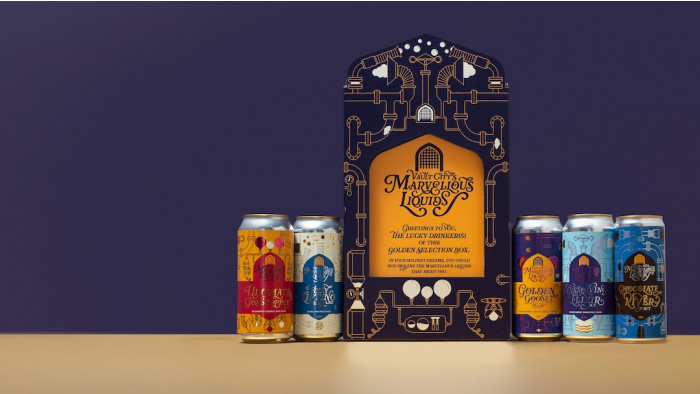Are stag dos bad for men?
Drinking, debauchery, even death – has the time come to abolish these toxic rituals of booze and banter?


Twenty-six men were on holiday in a European town not known for attracting stag parties.
On the second night, the dominant male had dressed as the Enid Blyton character Noddy, complete with a blue hat with a bell at its end. Fairly late, they staggered across an otherwise deserted main square when, from the other side, a large group of German men approached in the dark. Their leader was dressed as Batman, the caped crusader. When they met in the middle, Noddy and Batman felt compelled to engage, like stags in a forest clearing. Without a word, they locked antlers in a primal mime battle of escalating obscenity.
I have a hazy memory of Batman pretending to do something unpleasant with Noddy’s hat.
These men were smart, worldly, and about to marry long-term partners. But for one weekend abroad, they were speaking the international language of the stag do, an evolving dialect with its own rules and a code of silence (bromertà?) that will exclude identifying details from any anecdote herein. A rite of passage, a festival of machismo… a cash drain, a toxic blight on the liver and masculinity itself; stags can arouse as many feelings as there are Ryanair destinations east of Berlin.
For the past couple of decades, stags have become synonymous with base pursuits. An itinerary lands in a dozen or so inboxes: ‘Gentlemen, start your engines!’ I have opened letters from HMRC with more enthusiasm. On the ensuing weekends, I have fired paintballs among tanks in a former Soviet republic, lost multiple go-kart races, played footgolf in Catford (actually great, but stick to nine holes) and have been turned away from every nightclub in Munich alongside a stag dressed as Ron Weasley (he has ginger hair – LOL!).
My own stag tales are tame compared to those provided by acquaintances via social media. A stag, dressed as a Friesian cow and, unbeknown to him, sprayed with bovine pheromones (provenance unclear), given a front-row seat at a Spanish bullfight. Two men cheat on their wives with members of a hen party on a Canary Island, only to find those women catering the stag’s subsequent wedding. And a stag made to perform as a French mime artist in a Spanish city square, electrocuted with a dog collar strapped to his upper thigh when tourists declined to throw him coins.
Stories worse even than these routinely circulate on return flights and train journeys and the stag WhatsApp postmortem. So, are these the stories that define us? What does the stag even mean today? And is it bad for mankind?

Students of stag culture trace the no-holds-barred stereotype to an explosive coincidence. “During the Nineties, there was an escalation in what a night out is,” says Thomas Thurnell-Read, lecturer in cultural sociology at Loughborough University.
More relaxed licensing laws helped to kick-start a new night-time economy in which the pub became just the starting point. “It made sense for a stag weekend to be bigger and better as well,” adds Thurnell-Read, who spent months doing fieldwork in Kraków, like a David Attenborough of the lash, for his 2012 PhD thesis (the intersection of booze and masculinity has remained a focus for his research).
Just as the pub night ending in a groom chained to a lamppost gave way to something bigger, budget airlines and EU expansion broadened the horizons of best men. The stag night became a weekend. Prague, Riga, Kraków: destinations that could be reached for the price of a round of drinks back home, and where that round could be bought with a crisp €5 note. If there was a plan beyond the drinking, it rarely got more imaginative than paintballing or perhaps some kind of mid-octane, river-based activity requiring the shovelling of beer bellies into perishing wetsuits.
But, after five ‘Ryanair’ stags, the tolerance of the next guy on the marriage carousel may have diminished. “As the best man it’s your reputation on the line and you want to look for something new,” says James Baddiley, founder and CEO of Chillisauce a London-based agency, where stag parties make up almost half the 150,000 customers it arranges events for each year.
A maturing, increasingly competitive stag market has responded, laying on ever more varied stagtivities. “Life drawing is actually one of our top-selling products,” Baddiley adds. “And paella-making classes are popular at the moment.” He laughs when asked to consider the response to such a suggestion made to a best man in 2002, when he started his company.
On recent stags, I have camped and kayaked in the Isle of Wight and hiked up Arthur’s Seat in Edinburgh. Robbie, a friend of mine, tells me he has just survived, with a surprisingly clear head, a stag night in London that began with an hour of Buddhist meditation.
“We had to take it seriously because there were about 50 people, all sitting on cushions in front of some sort of monk,” he says. “Occasionally a Tibetan bell would ring.” Robbie, who is 35 and a teacher, says he would approach the classic strip-club, team-shirt stag trip with “pure terror and shame. I would hate to be connected with any of that. But did anyone really want to do it?”

Classic stag do banter
The truth is, they did want to do it. They were absolutely desperate to do it. And many still are. Though that is finally, gradually, beginning to change. One reason for this could be that the average age of a groom in England and Wales went from 27 in 1970 to 37 in 2015, the latest year recorded by the Office for National Statistics.
“In Shakespearean terms, they’ve gone from the soldier to the judge,” says Oliver Lucas, who runs iamthebestman.co.uk, a portal for stag ideas and price comparisons. In ‘all the world’s a stage’ terms, that’s a leap from ‘sudden and quick in quarrel’ to ‘in fair round belly… full of wise saws and modern instances’. Ideally, men become slightly more sophisticated in their tastes as they age, while also discovering a liberating indifference to peer pressure.
“I think there’s also more of a health-consciousness now,” says Thurnell-Read, who is 36. “In some of my work on masculinity and drinking, I’ve observed a loosening of that bond among men who are more fitness-focused. There’s an emphasis on this sort of Joe Wicks, clean-and-strong, in-control masculinity.”
The academic is going to a stag do the day after we speak – a camping and hiking weekend in Cornwall with a few pub stops. “There’s often that fear: should we be doing something more punishing?” he says. “But it’s what [the stag] wants, and it’s nice that everyone can say, ‘We don’t have to show off or do something big, we can just get together and hang out.’”
For Darren Marshall, it started as a business opportunity. The London-based artist has exhibited in big galleries across Europe. About five years ago, he observed the growth of life-drawing sessions in village halls and pub function rooms, and had a flash of inspiration. It’s a Friday when we speak and Marshall’s company, Hen & Stag Life Drawing Co, is preparing to host 10 events that weekend alone; he now arranges several hundred a year. In each one, a professional nude life model sits for the amateur draughtsmen, who can drink while they draw under the guidance of an art tutor.
He hosts more hen parties than stags, but Marshall, who’s 45, says that’s changing fast.
“I didn’t know it would work but it really seemed to strike a chord,” he says. “I’ve been to a lot of stags and hated a lot of them, and I can’t work out why they’re structured the way they are – getting bladdered for three days in a row. But a lot of stags don’t want to go to strip clubs or do all that any more.” Marshall also finds an entertaining symbolism in the way his sessions reframe stag nudity. “There might be some giggling at the start, and some not knowing where to look, but then it’s very respectful,” he adds.

If some stags are crawling on to more decorous ground, that can only be a good thing. But the truth is, the joint ‘sten’, the Buddhist meditative stag or the coastal-path-and-pint-of-Doom-Bar stag still only represents a small (albeit growing) middle-class minority.
Generally speaking, a stag party in 2018 still features the dual anachronisms of booze as relentless punishment and women as nothing but sexual objects to be ogled and degraded. Not to mention a genuine physical threat: in an Observer article, journalist Sirin Kale found that at least 30 British men have died on stag dos in the past 10 years, while many more have suffered serious injuries. All of this combines to shape the popular idea of stag culture – an idea that does little for the male reputation in the current era.
“The media has seized on the stereotypical stag do, but I also think they’re becoming outdated,” says Lucas, who is 40 and is about to go to the Dordogne for a wine-tasting stag weekend.
“I think residents are tired of it in the cities that get a lot of stag dos, I think the girlfriends are tired of it and I think men are tired of it.”

An altogether more civilised stag
So why do we even bother?
Is there any inherent value in this ritualistic dispatching of bachelordom? Sociologist Thurnell-Read thinks so, arguing the case that it is all too easy to make judgements about men on stag dos in a way that misses their potential value. “Male friendship is often downplayed in our culture,” he says. “There is that idea that men don’t have meaningful friendships while women do, but the men I spoke to had formed their groups over decades.
I saw plenty of emotion – really sentimental stuff about how they looked out for each other, nice stuff about the fiancées, and touching speeches about the stag.” That stag dos might be stealthily nurturing a male vulnerability may sound like a stretch, but their potential for bonding is real – even if that only manifests itself as a couple of blokes blubbing ‘I love you’ at each other after 10 pints.
Let’s not get carried away, though. While tastes may be shifting as an industry has matured, the majority of stags have not. Nor has the institution of The Stag Do, and what it represents: carte blanche to enact the basest, most depraved facets of an outdated notion of masculinity. Want to celebrate male friendship? Great. But must stags require humiliation, and lay waste to cities, wallets and livers? If stags are also causing a reputational cirrhosis – and literally killing us with alarming frequency – are they actually worth it? Maybe the time has come to end the bromertà, once and for all.
(Photography: Sun Lee/other images: Getty)
Latest
Related Reviews and Shortlists









